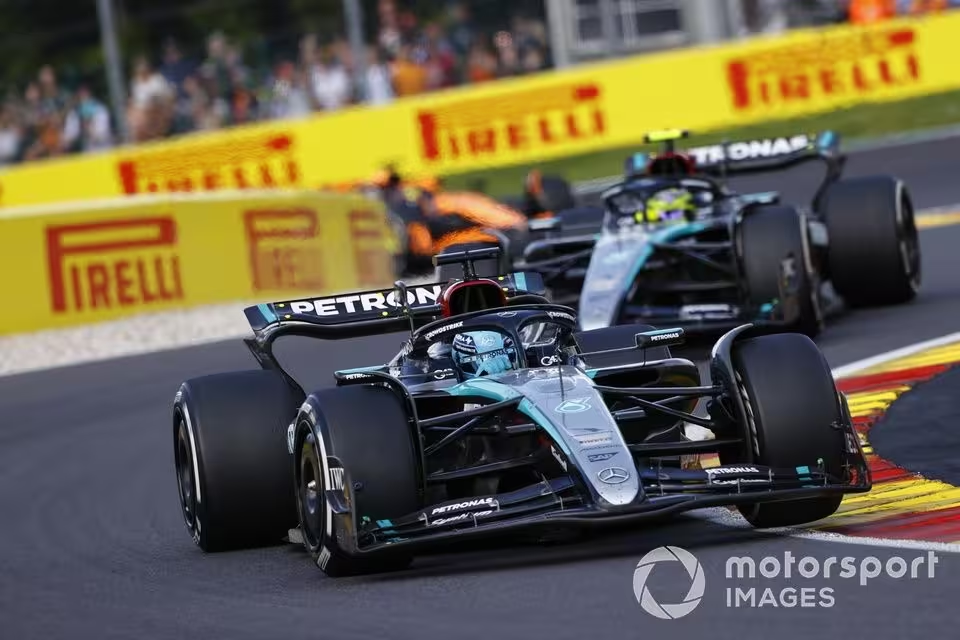In the immediate aftermath of the Belgian Grand Prix, Lewis Hamilton questioned why he wasn’t afforded the same one-stop strategy that helped team-mate George Russell win the race.
It wasn’t just Hamilton’s side of the Mercedes garage that was caught out by the one-stopper suddenly being on the table, as in the top 10 only Aston Martin’s Fernando Alonso followed suit.
The Spa-Francorchamps race was F1 at its unpredictable best, with Mercedes turning around a tough weekend to claim a – temporary – one-two, and the great McLaren versus Max Verstappen battle for the win never materialising.
The race played out very differently to what people up and down the paddock had been expecting. It was thought that on the partially resurfaced layout tyre degradation would be higher than in previous years, bumping the ideal strategy up to a two-stopper on medium-hard-hard compounds.
That would also help overtaking remain easier than on most circuits, meaning teams weren’t particularly alarmed by getting undercut by the car in front during pitstops because they thought their drivers could re-pass rivals on fresher tyres.
But after rain on Saturday limited dry-weather running, both the teams and tyre manufacturer Pirelli were completely blindsided by the lack of wear on the hard compound, which suddenly brought a one-stopper – which Pirelli predicted would be “off the table” – back into play.
Adding to the small gaps between teams, the shortened DRS zone on the Kemmel straight and the ever-worsening dirty air effect, minimal tyre degradation made overtaking a lot harder and keeping track position much more crucial than expected.
In the closing stages Hamilton couldn’t get past Russell on much fresher tyres, while Oscar Piastri quickly bridged the gap but got stuck behind both.
George Russell, Mercedes F1 W15
Photo by: Andy Hone / Motorsport Images
Piastri’s team-mate Lando Norris also had more pace on his hards than Max Verstappen on the much less durable mediums, but couldn’t find a way past in the battle for fifth.
So if clear air was king, as Piastri pointed out to his race engineer, then why didn’t he or other drivers follow Russell’s lead?
“Yes, we considered that,” McLaren team principal Andrea Stella explained. “We were not adamant that it was going to work.
“For us it was pretty extreme, because if you commit to this and it doesn’t work, you can probably screw up a race day. It can become very, very…
Click Here to Read the Full Original Article at Motorsport.com – Formula 1 – Stories…

